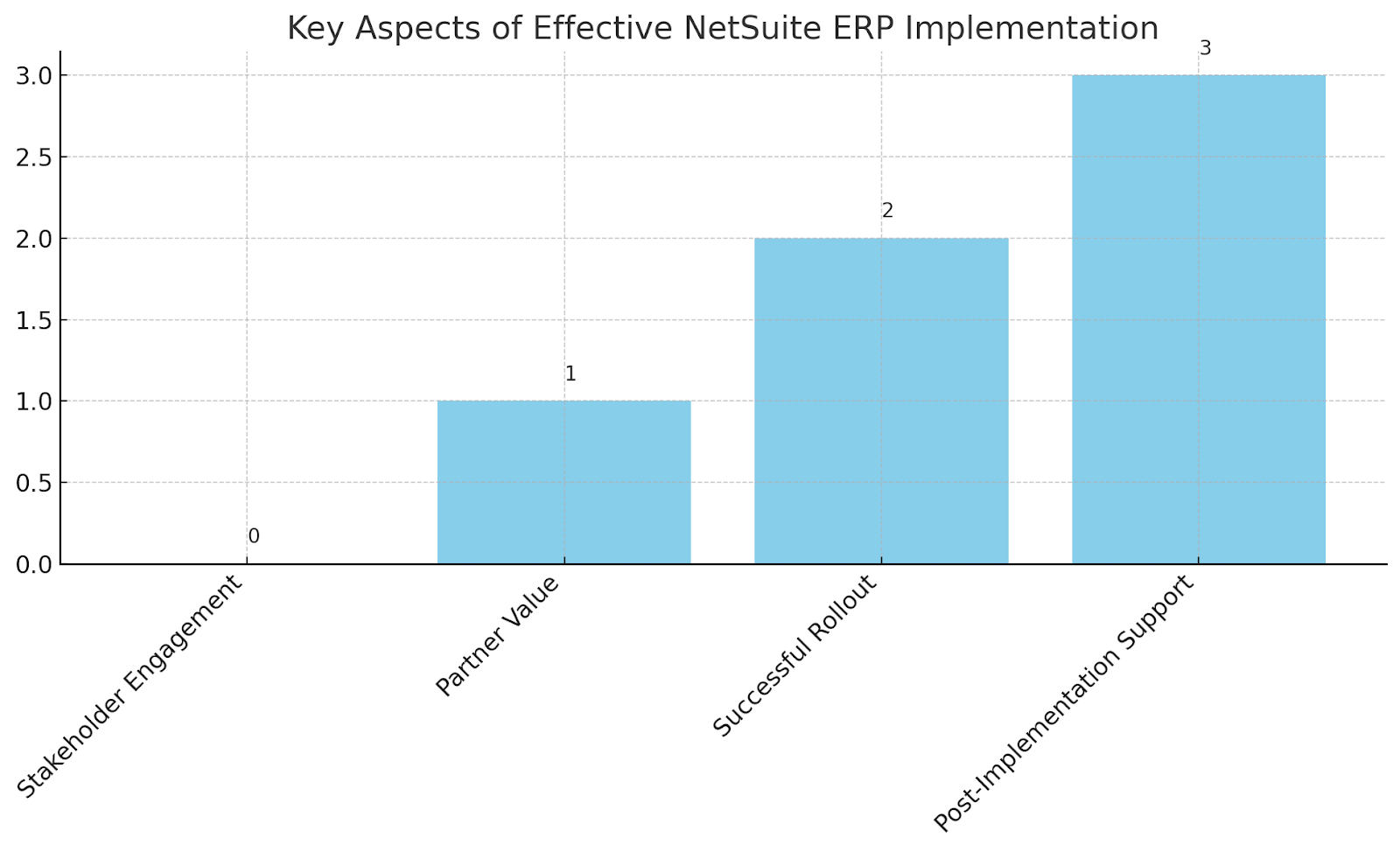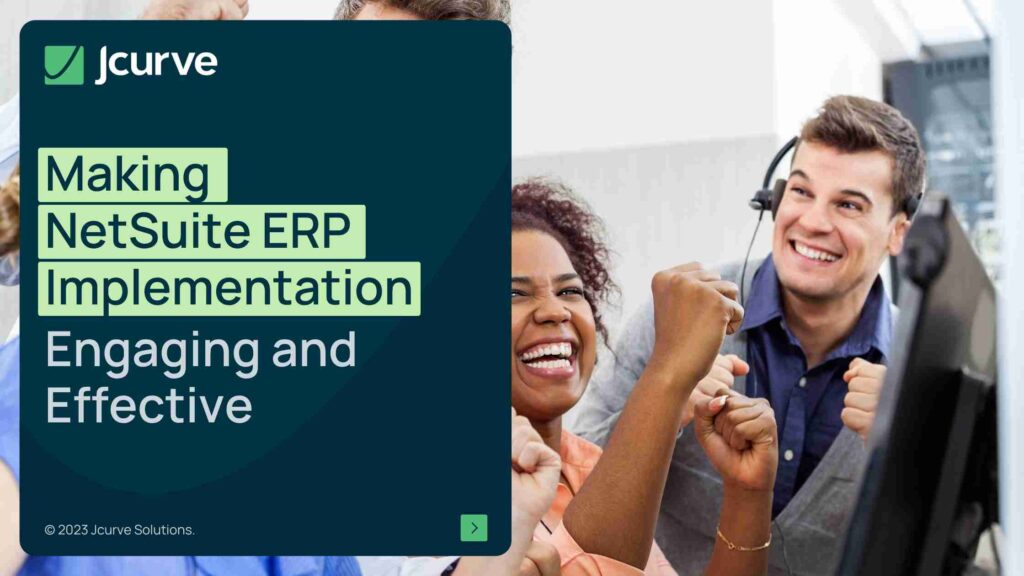Key Takeaways
| Aspect | Detail |
| Engaging ERP Implementation | Strategies to enhance user involvement and commitment. |
| Effective Implementation | Tactics for ensuring a successful NetSuite ERP rollout. |
| Partner Involvement | The role of NetSuite partners in a seamless implementation process. |
| Post-Implementation Support | Importance of ongoing support after ERP implementation. |
Engaging Stakeholders in ERP Implementation
Implementing an Enterprise Resource Planning (ERP) system, like NetSuite, is more than just a technical project; it’s a significant change in how a business operates. Engaging stakeholders in the Philippines is crucial for a smooth transition.
To achieve this, businesses must focus on clear communication, ensuring that all parties understand the benefits and changes that the NetSuite ERP system will bring.
Understanding stakeholder needs and addressing their concerns helps in customising the ERP solution to meet specific business requirements. This personalised approach not only makes the implementation process more relevant to each user but also enhances their commitment to the project.
Before beginning the ERP implementation process, it is critical to choose the right ERP system and vendor partner to engage with. Opting for NetSuite ERP and leveraging their expertise through the implementation enables businesses in the Philippines to achieve optimal outcomes from their ERP project.
Maximising the Value of Your NetSuite Partner
A key element in making ERP implementation effective is the choice of a NetSuite partner. The right partner brings expertise and insights that can dramatically simplify the implementation process. For instance, Jcurve Solutions, as a trusted NetSuite partner, offers invaluable support and guidance, ensuring that the implementation aligns with your business goals and industry best practices.
Ensuring a Successful Rollout
The success of a NetSuite ERP implementation hinges on several factors, including thorough planning, effective training, and efficient data migration. Businesses should emphasise:
- Detailed Planning: Understanding the scope and objectives of the implementation, and setting realistic timelines. This planning phase involves identifying ways the NetSuite ERP will improve operational efficiency in the Philippines. By automating repetitive tasks, enabling real-time data processing, and improving inter-departmental collaboration, the ERP system streamlines business processes, enhancing overall efficiency and helping to save time and resources.
- User Training: Providing comprehensive training to ensure all users are comfortable with the new system.
- Data Integrity: Ensuring accurate and efficient data migration, which is critical for system reliability and user trust.
How does ERP implementation improve operational efficiency?
Data security is a key component of data migration; thus, NetSuite uses robust encryption methods and a secure access control system to protect data during the implementation process. This ensures that all sensitive business information remains secure from unauthorised access, both in transit and at rest.
Post-Implementation: The Journey Beyond
After the initial implementation, the focus should shift to continuous improvement and support. Post-implementation support, as offered by Jcurve Solutions, is vital to address any issues and optimise the system for evolving business needs in the Philippines.
How do you ensure user adoption after an ERP rollout?
To ensure user adoption after the ERP rollout, Jcurve Solutions provides extensive training and resources to build confidence and competence among users. Continuous monitoring and user feedback are employed to cater to the users’ needs and refine the ERP usability, driving user adoption and satisfaction.

Table 1: Highlighting the key aspects of effective NetSuite ERP implementation
Leveraging Technology for Enhanced User Experience
In today’s digital age, leveraging the latest technology is key to an engaging ERP implementation. NetSuite offers a range of features that can be utilised to enhance user experience:
- Customisable Dashboards: Providing users with the ability to customise their dashboards can significantly improve their interaction with the ERP system.
- Mobile Accessibility: Offering mobile access to the ERP system ensures that users can stay connected and productive, even when on the move.
Training and Support: Building Confidence and Competence
Effective training is not just about understanding the functionality of NetSuite; it’s about building confidence and competence among users. This can be achieved through:
- Interactive Training Sessions: Engaging, hands-on training sessions help users to better understand the system.
- Continuous Learning Resources: Providing ongoing learning resources ensures that users can continually improve their skills.
Monitoring and Feedback: The Cornerstones of Continuous Improvement
Post-implementation, it’s essential to monitor system performance and gather user feedback. This helps in:
- Identifying Issues: Quick identification and resolution of any issues that arise.
- Continuous Improvement: Regular feedback from users can be used to make continuous improvements to the ERP system.
Conclusion
Making NetSuite ERP implementation engaging and effective in the Philippines requires a multifaceted approach. From involving stakeholders and leveraging the right partner to utilising technology and providing comprehensive training and support, each element plays a critical role in the success of the implementation.
Jcurve Solutions, with its expertise in NetSuite ERP, stands as a valuable partner in this journey, providing not just technical know-how but also essential post-implementation support to ensure that the ERP system continues to meet the evolving needs of businesses in the Philippines.










